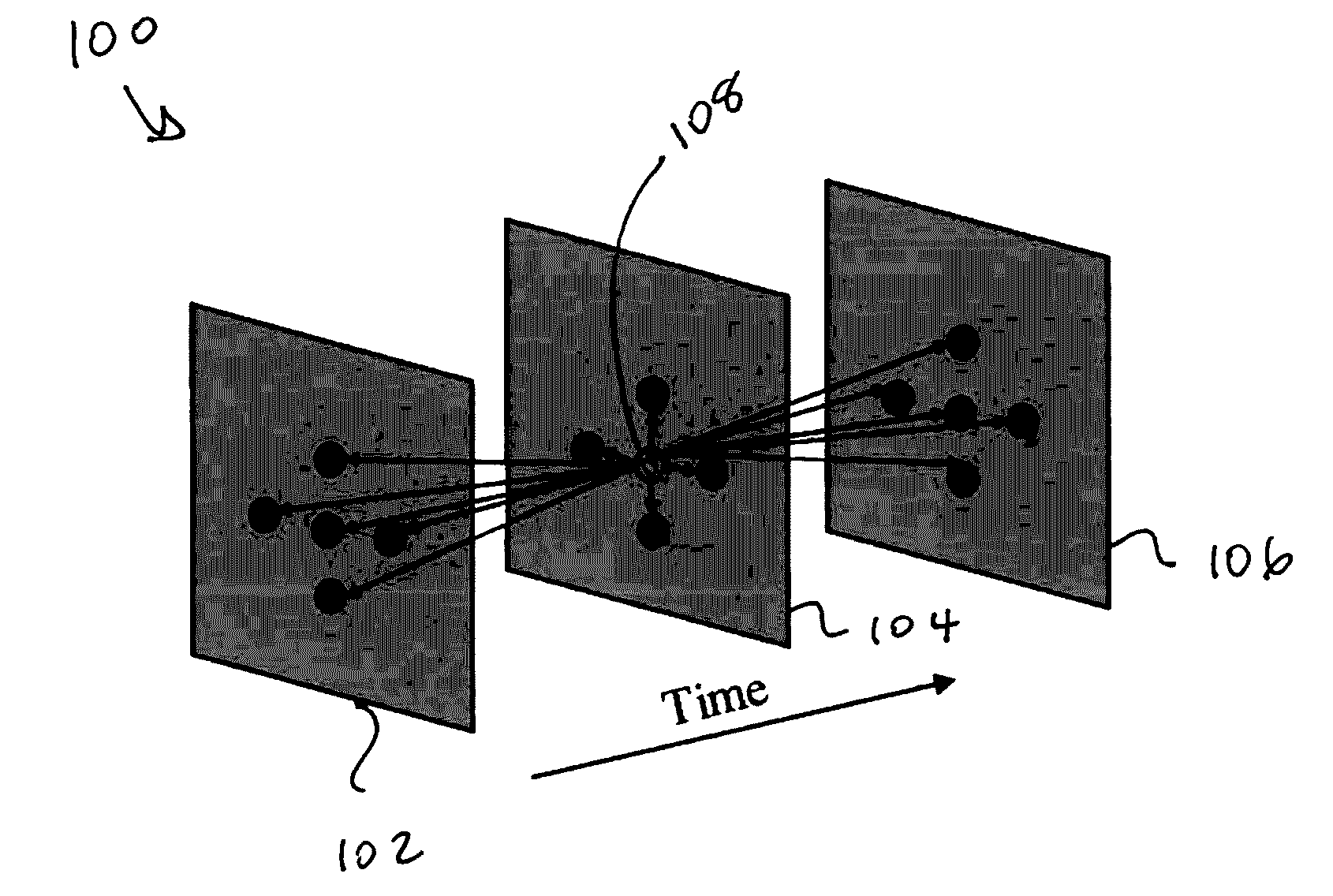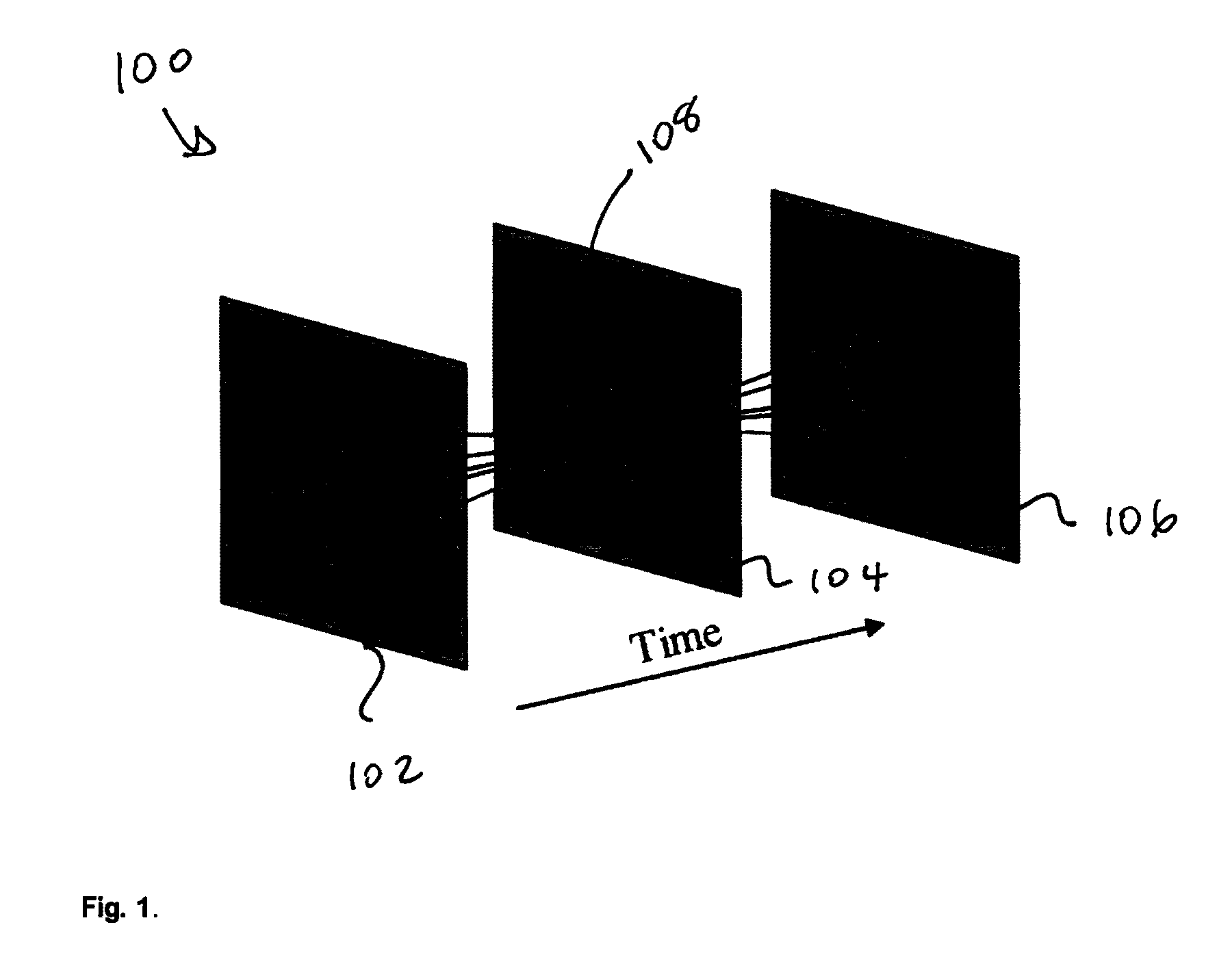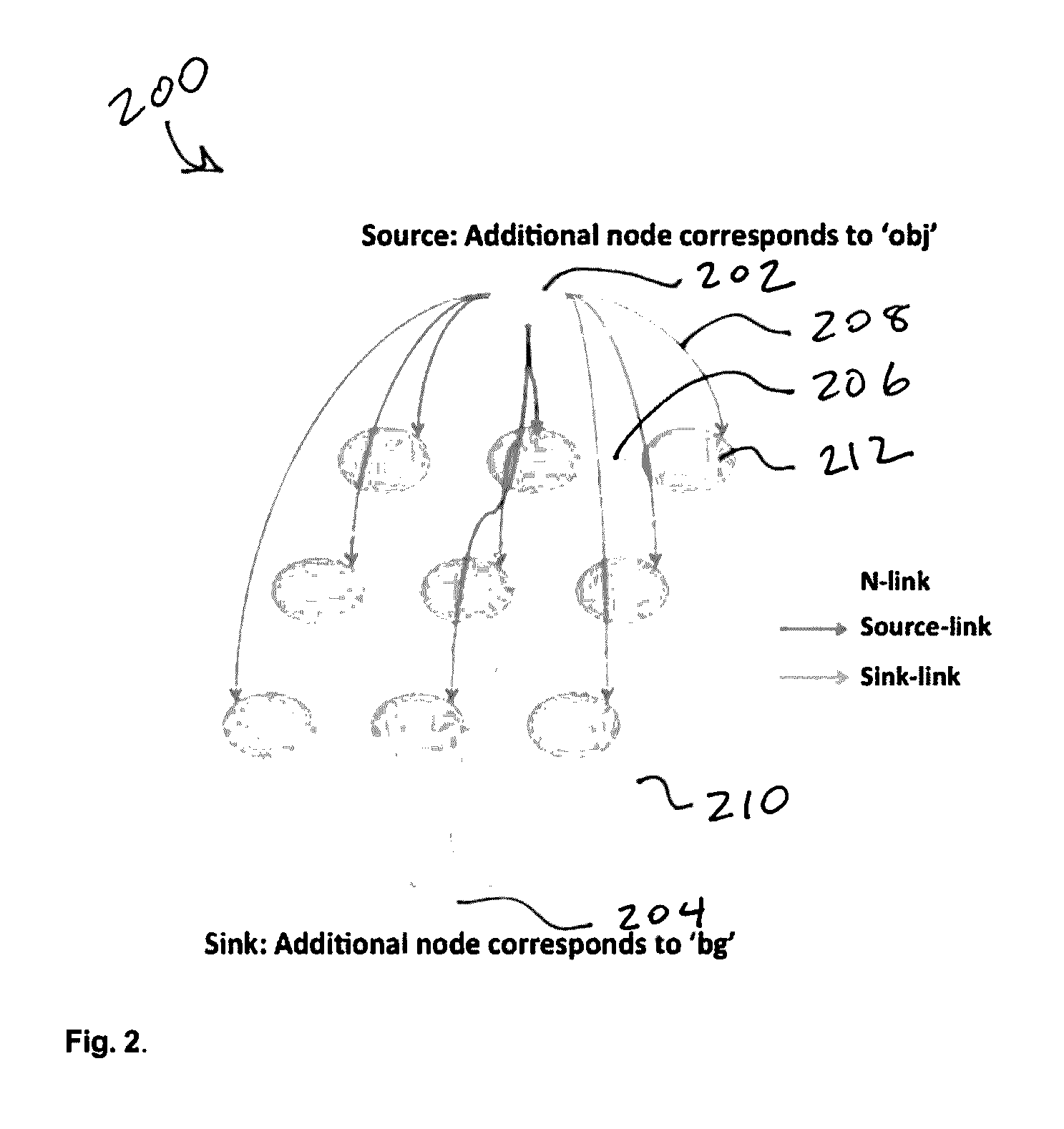Graph-based framework for video object segmentation and extraction in feature space
a graph-based framework and video object technology, applied in the field of video processing methods, can solve the problem that single target object extraction would be a more demanding task, and achieve the effect of reducing inter-class connectivity and comparable or better performan
- Summary
- Abstract
- Description
- Claims
- Application Information
AI Technical Summary
Benefits of technology
Problems solved by technology
Method used
Image
Examples
Embodiment Construction
[0016]Finding video key-segments in feature space according to the method of the present invention is now described.
[0017]Given the full accessibility of consumer videos saved on various multimedia platforms and online cloud storages, the video sequence can be processed all at once instead of one frame at a time. As discussed before, independent frame by frame segmentation produces unstable segmentation results and requires an additional post-refinement step to achieve higher accuracy. The method of the present invention takes pixels from both past and future frames together to construct a graph model. Considering the objective of segmentation is to group pixels that are attributed to the same object in all frames and assign the same label to them, instead of building up a 3D grid structure graph model from the video volume directly, the method of the present invention constructs a 7D feature space that covers color, motion, time and location information so that pixels are reorganiz...
PUM
 Login to View More
Login to View More Abstract
Description
Claims
Application Information
 Login to View More
Login to View More - R&D
- Intellectual Property
- Life Sciences
- Materials
- Tech Scout
- Unparalleled Data Quality
- Higher Quality Content
- 60% Fewer Hallucinations
Browse by: Latest US Patents, China's latest patents, Technical Efficacy Thesaurus, Application Domain, Technology Topic, Popular Technical Reports.
© 2025 PatSnap. All rights reserved.Legal|Privacy policy|Modern Slavery Act Transparency Statement|Sitemap|About US| Contact US: help@patsnap.com



